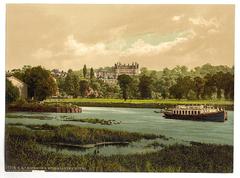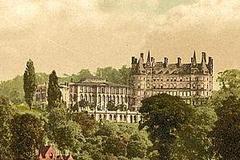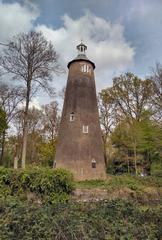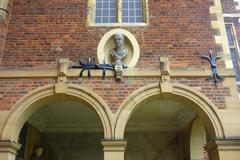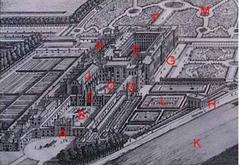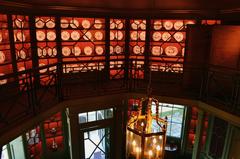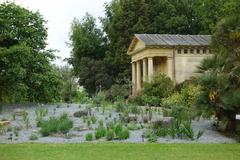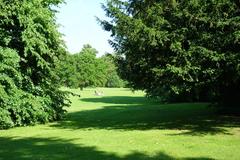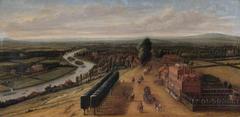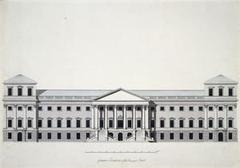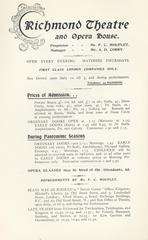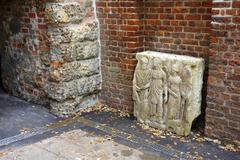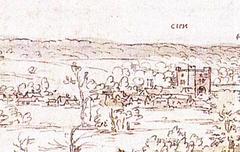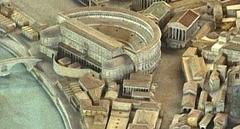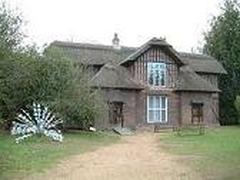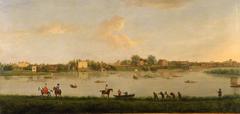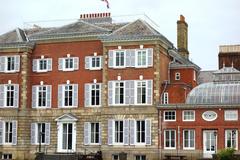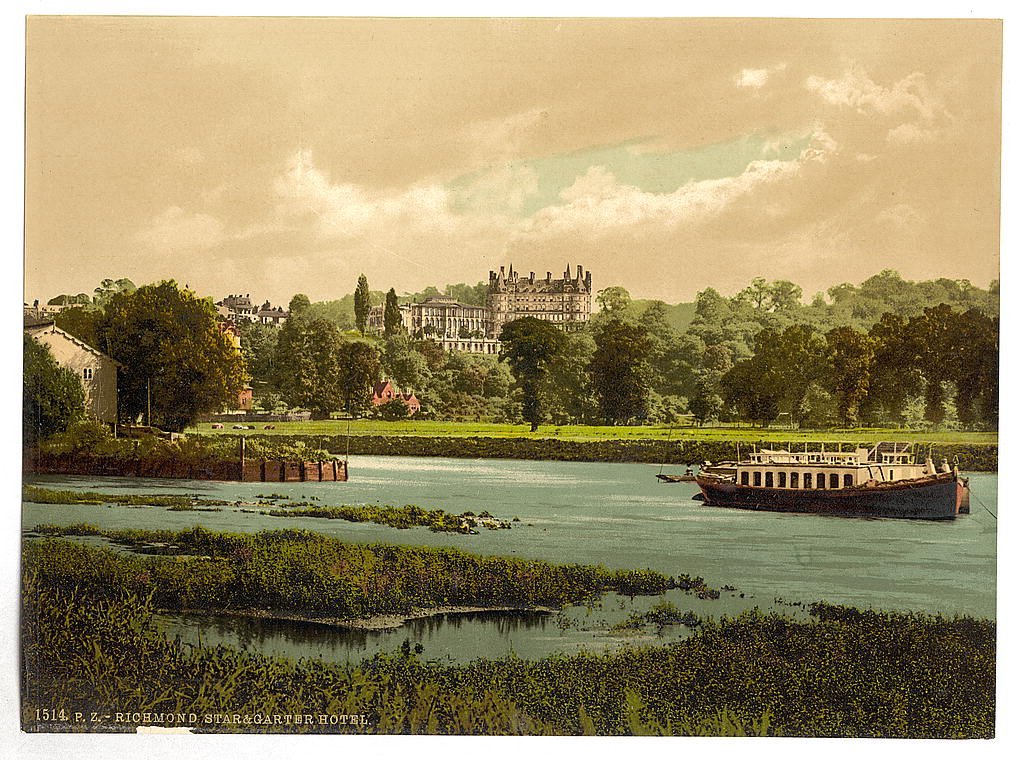
Royal Star and Garter Home Richmond: Visiting Hours, History, and Guide
Date: 14/06/2025
Introduction
Perched atop the historic Richmond Hill, the Royal Star and Garter Home is an architectural and cultural landmark with a rich legacy. Originally an 18th-century inn, later a grand Victorian hotel, and finally a pioneering care home for disabled veterans, the building has witnessed—and contributed to—key moments in British social history. Though now privately owned as luxury residences, its elegant neoclassical façade, storied past, and the panoramic views it commands continue to captivate residents and visitors alike. This guide offers an in-depth look at the site’s evolution, visiting information, practical tips, and ways to engage with Richmond’s broader heritage landscape.
For additional detail, consult resources such as the Knight Frank brochure, the Historic England listing, and Richmond Local History Notes.
Table of Contents
- Introduction
- Origins and Early Development
- Transformation into a Home for Veterans
- Architectural and Heritage Significance
- Visiting the Royal Star and Garter Home: Hours, Tickets, and Accessibility
- Special Events and Community Role
- Adaptive Reuse and Modern Residences
- Richmond Heritage Context
- Notable Events and Legacy
- Frequently Asked Questions (FAQ)
- Plan Your Visit
- References and Further Reading
Origins and Early Development
The site’s story begins in 1738, when John Christopher opened the Star and Garter inn, strategically located on the slopes of Richmond Hill. Thanks to its commanding views of the Thames and proximity to Richmond Park, the inn quickly became a social hub. Over the 19th century, it was transformed into the Star and Garter Hotel, famed for its opulent accommodation—boasting 130 suites—and its appeal to luminaries such as Charles Dickens, Alfred, Lord Tennyson, and Queen Victoria (Knight Frank brochure, p. 4). Dickens even hosted a dinner here to celebrate the completion of “David Copperfield.” By the late Victorian period, the hotel had become one of London’s most fashionable retreats.
Transformation into a Home for Veterans
World War I dramatically changed the building’s fate. The hotel was requisitioned for military use, and, recognizing the urgent need for veteran care, was converted into a home for disabled ex-servicemen. The original hotel was demolished, making way for a new, purpose-built facility designed by Sir Edwin Cooper. Opened by King George V and Queen Mary in 1924, the Royal Star and Garter Home was both a state-of-the-art care institution and the Women of the Empire’s Memorial of the Great War (Historic England listing; Military History Fandom). Its creation was a powerful act of national gratitude and a pioneering model for veterans’ rehabilitation.
Architectural and Heritage Significance
The building is a Grade II listed landmark celebrated for its neoclassical design, symmetrical proportions, and dignified stonework. The grand marble entrance hall, sweeping staircases, and terrace gardens all reflect Sir Edwin Cooper’s vision for a residence that would uplift both spirit and body. The elevated site provides the only view in England protected by an Act of Parliament—an iconic panorama immortalized by artists like J.M.W. Turner (Knight Frank brochure, p. 18–19). The building’s status reflects both its architectural merit and its social significance as a pioneering veterans’ home.
Visiting the Royal Star and Garter Home: Hours, Tickets, and Accessibility
Public Access:
The Royal Star and Garter Home is now a private residential development and is not open for public tours or internal visits. However, its impressive exterior, gardens, and the protected views from Richmond Hill can be freely enjoyed from public spaces.
- Visiting Hours: Exterior viewing is possible at any time from the public paths on Richmond Hill.
- Tickets: No tickets are required to view the building’s exterior or the surrounding vistas.
- Accessibility: Richmond Hill is accessible by wheelchair, but some slopes are steep. Public transport (Richmond Station, several bus lines) and limited parking are available nearby.
Visitor Etiquette:
Please respect residents’ privacy by remaining on public paths and avoiding photography of private windows. Early mornings or late afternoons offer the best light and quieter surroundings.
Special Events and Community Role
While interior tours are not available, the Royal Star & Garter charity continues to host commemorative events at its new care homes and occasionally organizes public remembrances that reference the Richmond site. Richmond’s local history societies regularly feature the home in heritage walks and talks (Richmond Local History Society). The building remains an important symbol in annual remembrance and community events.
Adaptive Reuse and Modern Residences
In 2013, the charity sold the building to London Square for redevelopment (Richmond and Twickenham Times). Sensitive restoration preserved the neoclassical façade, grand communal spaces, and historic interiors. The site now offers 86 luxury apartments with exclusive amenities: a private leisure suite, swimming pool, spa, Harrods Estates concierge, formal gardens, and secure parking (Studio PDP; London Square). The development upholds the building’s legacy while meeting contemporary standards for high-end living.
Richmond Heritage Context
The Royal Star and Garter Home is intrinsically linked to Richmond’s broader history. Richmond Hill has long been a favored royal and aristocratic retreat, with Richmond Park—created by Charles I—sprawling across 2,500 acres nearby. Public walks along the Terrace Gardens offer unrivaled views over the Thames and Petersham Meadows, protected by the Richmond, Ham and Petersham Open Spaces Act 1902 (London Square). Other nearby attractions include Richmond Park, Ham House, and the historic town center.
Notable Events and Legacy
Throughout its history, the building has witnessed key cultural moments—from hosting Dickensian dinners to serving as a symbol of national remembrance. Notable residents include Nancy Wake, the famed WWII French Resistance agent. The home’s legacy is honored in dedicated memorials at Richmond Cemetery (Richmond Council), and its story reflects evolving attitudes to social care, heritage, and adaptive reuse.
Frequently Asked Questions (FAQ)
Q: Can I visit the interior of the Royal Star and Garter Home?
A: No, the building is now private luxury residences. The exterior can be viewed from public areas on Richmond Hill.
Q: Are guided tours available?
A: There are no tours inside, but local history groups regularly feature the site in their heritage walks.
Q: What makes the views from Richmond Hill special?
A: The panorama over the Thames is England’s only legally protected view, a legacy of the 1902 Open Spaces Act.
Q: How do I get there?
A: Richmond Station (National Rail and District Line) is a 15-minute walk. Multiple bus routes serve Richmond Hill.
Q: What other sites should I see nearby?
A: Richmond Park, Ham House, Richmond Theatre, and the town center’s shops and riverside walks are all recommended.
Plan Your Visit
- Address: Richmond Hill, Richmond, Surrey, TW10 6RR
- Transport: Rail (Richmond Station), bus, and limited local parking
- Accessibility: Steep hill; plan accordingly for mobility needs
- Best time: Early morning or late afternoon for views and photographs
For a richer experience, consider joining a Richmond Local History Society walk or downloading the Audiala app for guided audio tours.
Visuals and Media
Image alt text: Exterior view of the Royal Star and Garter Home on Richmond Hill, a Grade II listed building with classical architectural elements. Image alt text: Map showing location of the Royal Star and Garter Home on Richmond Hill with nearby walking routes.
Summary and Visiting Tips
- The Royal Star and Garter Home is a symbol of Richmond’s layered history, social progress, and architectural splendor.
- Its transformation from luxury hotel to veterans’ home, and now to private residences, reflects changes in British society.
- While not open for interior visits, the building’s exterior and surrounding views are accessible and rewarding for heritage enthusiasts.
- Combine your visit with a walk through Richmond Park or along the Thames for a full experience of the area’s natural and historical riches.
References and Further Reading
- Knight Frank brochure
- Historic England listing
- Richmond Local History Notes
- Military History Fandom
- London Square development site
- Richmond and Twickenham Times
- Studio PDP
- Richmond Local History Society
- Richmond Council
- Defonseka photo essay
- Star & Garter Charity
